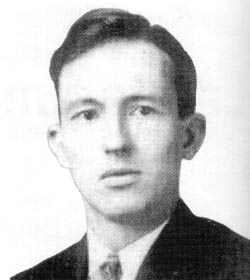Mark Dominus (陶敏修)
mjd@plover.com

Archive:
| 2017: | JFMAMJ |
| JA | |
| 2016: | JFMAMJ |
| JASOND | |
| 2015: | JFMAMJ |
| JASOND | |
| 2014: | JFMAMJ |
| JASOND | |
| 2013: | JFMAMJ |
| JASOND | |
| 2012: | JFMAMJ |
| JASOND | |
| 2011: | JFMAMJ |
| JASOND | |
| 2010: | JFMAMJ |
| JASOND | |
| 2009: | JFMAMJ |
| JASOND | |
| 2008: | JFMAMJ |
| JASOND | |
| 2007: | JFMAMJ |
| JASOND | |
| 2006: | JFMAMJ |
| JASOND | |
| 2005: | OND |
Subtopics:
| Mathematics | 129 |
| Programming | 57 |
| Language | 31 |
| Cosmic Call | 25 |
| Book | 23 |
| Misc | 22 |
| Physics | 20 |
| Unix | 19 |
| Oops | 18 |
| Tech | 16 |
| Linogram | 14 |
| Perl | 14 |
| Biology | 10 |
| Calendar | 10 |
| CS | 9 |
Comments disabled
Thu, 22 Jan 2009
Short reviews of books about category theory
Will not appear in live blog
formula provider: mathjaxThis article is a textbook-oriented summary of my experiences trying to learn category theory. The audience is assumed to be me, twenty years ago. However, it may be of use to computer science graduate students, and to bright undergraduate mathematics students, both of whom I somewhat resemble.
Categories for the Working Mathematician, Saunders Mac Lane. Everyone will recommend this one, but you should give it a miss; it is totally impenetrable. Perhaps it would be useful for a working mathematician, but I wonder. Anyway, you are not one, and neither am I.
But Mac Lane did teach me something useful. In Albers and Alexanderson's Mathematical People: Profiles and Interviews there is an interview with Mac Lane, which you will read sometime next year. The interview includes a contemporary photograph of him, and also an old snapshot, taken when he was in his twenties. At nineteen, we found the picture of Mac Lane in his twenties startlingly beautiful. He looked something like this:


Categories, Allegories, Peter Freyd. Worse than Mac Lane. I keep this one around on the shelf just so that I can pick it up ever few months and marvel at its opacity.
It is a superb example of the definition-theorem-remark style of mathematics textbooks. I have heard that this was a style pioneered by a book you are already familiar with, John Kelley's General Topology of 1955. If so, all I can say is, sometimes it works, and sometimes it doesn't. It worked for Kelley in 1955 writing about topology.
You will acquire this book around 1992 when you sit in on Freyd's introductory category theory class at Penn with the graduate students. You will learn a number of useful things in this class, although not about category theory.
In each class, Freyd will lecture, and you will be totally mystified as to what is going on. You will ask extremely basic questions, the sort that are terribly embarrassing, if you are at all prone to embarrassment, questions like "what is this about?" and "what is motivating this example?" and "where are you going with this?" and "I don't understand." None of the other students will ask any questions at all. You will become more and more dismayed that you are the only one who is so completely left behind. But do not despair! After each class the other students will come up to you and thank you for daring to ask the questions they were too embarrassed to ask themselves, like "what the fuck are you talking about?"
So you may not have learned much about category theory, but you will learn something interesting about graduate students.
Here is an example of what is wrong with this book.
Everyone who knows anything about category theory knows that a category is a sort of abstraction of a domain of mathematical objects, like sets, groups, or topological spaces. A category has a bunch of "objects", which are the sets, the groups, or the topological spaces, and it has a bunch of "morphisms", which are maps between the objects that preserve the objects' special structure, be it algebraic, topological, or whatever. If the objects are sets, the morphisms are simply functions. If the objects are groups, the morphisms are group homomorphisms; if the objects are topological spaces, the morphisms are continuous maps. The basic point of category theory is to study the relationships between these structure-preserving maps, independent of the underlying structure of the objects themselves. We ignore the elements of the sets or groups, and the points in the topological spaces, and instead concentrate on the relationships between whole sets, groups, and spaces, by way of these "morphisms".
I now quote the opening section of Categories, Allegories:
In light of my capsule summary of category theory, can you figure out what is going on here? Even if you already know what is supposed to be going on you are unlikely to make much sense of this. What to make of the axiom that •(xy) = •(x(•y)), for example?1.1 BASIC DEFINITIONS
The theory of CATEGORIES is given by two unary operations and a binary partial operation. In most contexts lower-case variables are used for the 'individuals' which are called morphisms or maps. The values of the operations are denoted and pronounced as:
The axioms:
•x the source of x, x• the target of x, xy the composition of x and y,
xy is defined iff x• = •y, (•x)• = •x and •(x•) = x•, (•x)x = x and x(x•) = x •(xy) = •(x(•y)) and (xy)• = ((x•)y)•, x(yz) = (xy)z.
(The explanation is that Freyd has presented a version of category theory in which the objects are missing. Since every object X in a category is associated with a unique identity morphism from X to itself, Freyd has identified each object with its identity morphism. •x is the identity morphism of the domain of x, and x• is the identity morphism of the codomain of x. Then axioms like (•x)• = •x, and theorems like •(•x) make sense.)
Another, briefer example: Early in the book, no later than page 13, Freyd begins to allude to "Lazard sheaves". These are apparently an important example. Freyd does not define oe explain what "Lazard sheaves" are. Okay, you are expected to do some background reading, perhaps. But you are doomed, because "Lazard sheaves" is Freyd's own private coinage, and you will not be able to look it up under that name.
So perhaps this book will work for someone, but it will not work for you.
Topoi: A Categorial Analysis of Logic, Robert Goldblatt. This is the book that finally worked for me, but I would not recommend it for you. It worked for me because of its strong logical direction, and I had been reading a lot of books about mathematical logic for the previous couple of years. (By the way, mathematical logic is a lot less boring than you have been led to believe.) Nevertheless I really liked it, and you might get more out of it than I expect. But definitely check out Lectures on the Hyperreals by the same author.
Introduction to Higher-Order categorial Logic, by J. Lambek and P. J. Scott. I still do not have the necessary background to read this book, and only understood about x of it, where 1/20 ≤ x ≤ 1/10. It gets moving extremely fast, covering the Yoneda lemma on page 11. (!!) I don't think it is completely impenetrable, only that it is way over my head.
Basic Category Theory for Computer Scientists, by Benjamin
C. Pierce.
Conceptual Mathematics: A First Introduction to
Categories, by F. William Lawvere and Stephen Hoel Schanuel.
This one is the winner. It's addressed to high school students, and
goes over the basic ideas very slowly and carefully. I didn't learn
much from this book, but I would have if I had met it earlier. Do the
exercises.
Conclusion: I think I should write my own introduction to category
theory.
[Other articles in category /math]
permanent link


